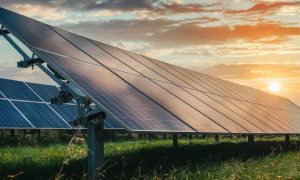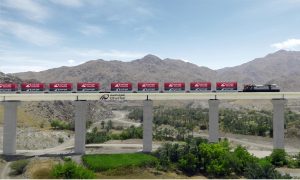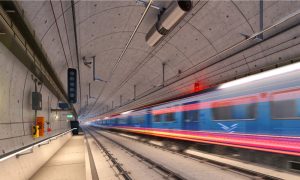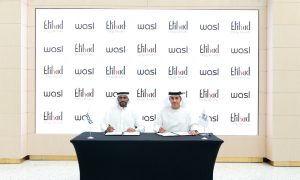Why do cranes fail?
When a crane fails, construction stops. Crane accidents are often very public, costly, and lives can be lost. And while these are obvious consequences and costs, there is also the potential for criminal charges and arrests with jail sentences a reality.

When a crane fails, construction stops. Crane accidents are often very public, costly, and lives can be lost. And while these are obvious consequences and costs, there is also the potential for criminal charges and arrests with jail sentences a reality.
Given the UAE is a very young country at 41 years old, there has been a lot of remarkable progress here in a short amount of time.
However when things as complicated as national development moves forward quickly, it is impossible to expect every single element of that change to move forward at the same pace.
There is work to be done but there is also a strong foundation to build on. The Crane Safety session at last month’s PMV Live event, was an opportunity to discuss how the region can best approach the challenge of ensuring that the industry is a safe as it possibly can be. It was a chance to examine some of the major challenges that are ahead for the industry if it wants to take the subject seriously.
Stephen White: What makes a tower crane safe?
Thibault Le Besnerais: I think talking about safety is not a matter of technology, it’s also about a matter of processes for our industry. We’re in an industry where lack of safety can have tragic consequences.
This is why we believe that safety is not only a feature, but also a culture and it starts from design. For sure, we completely follow all the standards and the compliance to the safety requirements, but because of the technology and experience that we have, we’ve also developed, at the design stage, some very strong models, calculation models, where we can very precisely plan for the crane behaviour and values and stress it will be exposed to.
Dr Peter Schieffer: What makes a tower crane safe is a set of people, procedures and things involved. It’s not just one element that makes a tower crane safe, it’s a combination of things.
One is the design of the tower crane, the material being used; the second is the safety features that you actually design into the crane, it includes things as simple as having proper handrails or no wide gaps in the crane, reaching out to elements like anti-collision interfaces.
The next element is operators: trained operators, operator training, correct dismantling training, skilled people basically, that’s another element that makes tower cranes safe.
And then of course there’s inspection, servicing and maintenance of a crane to avoid the unthinkable one day happening. There’s a lot prevention you can take by just maintaining the crane properly.
Andrew Henry: For us, as a contractor, the safety of our tower cranes really starts from the very inception of the project. To really comprehensively address that risk we very closely with the construction and design team to make sure that we take out as much risk out of the proposed crane layout as possible, and minimise potential crashes and make sure there’s a safe way of pulling them down at the end of the project.
SW: How concerned should we be as an industry about the fake and counterfeit crane products that have crept into the market?
TLB: It’s difficult to control; with the internet you can buy things from anywhere. So that’s difficult, but the best way is to contact the original manufacturer. It’s a big project, it started with Asia and now it’s moved to the Middle East, spreading to Europe and it’s a real issue.
AH: We work very carefully to ensure that we select our partners who we work with in this space very carefully, to make sure that they share our passion for safety and quality. In the case of tower cranes, we obviously have manufacturers we work with. We have a fleet of 87 cranes, so we have to choose who we buy them from.
Just like a car, you can either buy a very cheap one, or a very good one. And you need to have a good one, so that’s the first thing. Then the staff that these people have, they have to be qualified and share the same values that we have and not cut corners. We need to make sure that we have faith in the organisation doing the certification, they have to be independent, they act with high integrity and they don’t cut corners either.
SW: with that in mind, Where does a developer or a contractor’s responsibility begin in terms of crane safety on projects?
Andrew Henry: Ultimately, the head contractor is responsible for the safety on that site, and if something goes wrong, they’re the ones that the police come to, they’re the ones that lead the investigations if there’s been an incident.
Usually what happens initially is that key management responsible for a site, particularly for safety, will end up being incarcerated and their passports confiscated. These things can happen. So that’s one incentive, apart from that no one wants to see anyone get injured any way.
PS: To put it politely, we cannot at the end of the day, make the crane idiot-proof, but we’re working on it to eliminate, as far as we can, any operator error.
Today’s technology and computer systems actually to take complexity out of the process, rather than adding complexity by really using smart control systems to make sure that the crane operator, and whatever condition the crane is in, will not do something stupid.
It’s our people erecting and dismantling cranes, it’s our own people operating cranes and you want to make sure that these people get home safe and healthy and alive at night and you don’t want to take any chances on that. So clearly, you have to be a driving force in that respect. It’s not a feature, it’s a culture and it should be mandatory.
Engineer Alia: Our priority is safety, safety and safety. We don’t want to come to an end where having an accident, or major high risk problems.
At the end, the reputation of Dubai will be affected, and to reduce (the risk of accidents), we have different types of departments controlling construction sites.
We have a pool of inspection bodies accredited from Dubai Municipality and we make sure that they’re competent at an international level. They will judge the company and the inspection bodies and make sure they are performing inspections to an international standard. This will add credibility to the certificate being issued to the construction site, guaranteeing that the tower crane is safe to be used.
This is one of the elements that affect safety. We do have the manufacturer, we do have the installation, but we want more than this.
The Building Department and Dubai Municipality inspect the building sites and they make sure contractors are following Dubai’s regulations and rules.
SW: Which direction do you think the crane and general construction industry should proceed from
this point?
Richie Colley: It depends on the client really. Some of our clients now are enforcing more stringent rules, but with tower cranes, every time it’s altered, it must be inspected. Every time you make it higher, shorter, etc, you must inspect it.
For the GCC countries, this is the one that’s leading the way for the inspection of tower cranes. All over the UAE, especially Dubai.
They’re driving it forwards, the way it should be. Now they’re tying in with Abu Dhabi, and Abu Dhabi is going in that direction, and the more they drive it, the better it will be.
AH: What we’re passionate about is adding a higher level of mandated safety regulatory body here. That would create a more even playing field for all contractors and balance the costs for everyone.Well, I suppose ultimately the municipality is a key player in that and they’ll determine which body will dictate that, I suppose.
PS: How practical is it to end up in jail because you’re not watching the rules and you’re doing something that’s not safe?
It starts with the manufacturers, but it goes through to the operators, the construction companies, the way you lay out the cranes, how you operate them, in what conditions, how much pressure you put on them, how you train people and all these things.
When you ask yourself if it’s practical or not, (you have to realise) at the end of the day, we’re talking about lives of people and some catastrophic consequences if you don’t watch out. I don’t think it’s an option.
It’s in your best interests, anybody involved in a construction site, should be invested personally to watch safety.


















